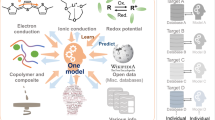Abstract
Since its origins, TRIZ theory has been concerned with the use of fundamental knowledge of physics as a means of solving engineering problems. The three decades of TRIZ history have seen the emergence of methodological tools such as substance-field analysis combined with databases that have become increasingly computerized in line with advances in computer science. However, the current revival of artificial intelligence calls into question everything that has been done previously in terms of classification and allows us to think about the pairing of engineering problems and knowledge of physics not from closed databases, but in real time from online data sources and according to the versatility of web content. This article presents a new approach to pairing called PhysiSolve based on Artificial Intelligence techniques. We used natural language processing models like transformers based on attention to boost learning which allows us to outperform classical models for downstream tasks and unlock technical language understanding to automate data classification and facilitate semantic search for better ideas generation. Our research has led us to develop an online tool whose first results are presented and discussed from a perspective of measuring the efficiency of conducting an inventive activity. These results reinforce our belief that artificial assistance to inventiveness in R&D is no longer just possible but paves the way for a new era of digital tools for engineers and industrial companies.
Access this chapter
Tax calculation will be finalised at checkout
Purchases are for personal use only
Similar content being viewed by others
References
Terninko, J., Zusman, A., Zlotin, B.: Systematic Innovation: An Introduction to TRIZ (Theory of Inventive Problem Solving). CRC Press, Boca Raton (1998)
Cong, H., Tong, L.H.: Similarity between TRIZ Principles. Triz J.
Cong, H., Tong, L.H.: Grouping of TRIZ inventive principles to facilitate automatic patent classification. Expert Syst. Appl. 34, 788–795 (2008). https://doi.org/10.1016/j.eswa.2006.10.015
Adams, C., Tate, D.: Computer-aided TRIZ ideality and level of invention estimation using natural language processing and machine learning. In: Tan, R., Cao, G., León, N. (eds.) CAI 2009. IAICT, vol. 304, pp. 27–37. Springer, Heidelberg (2009). https://doi.org/10.1007/978-3-642-03346-9_4
Kaliteevskii, V., Deder, A., Peric, N., Chechurin, L.: Conceptual semantic analysis of patents and scientific publications based on TRIZ tools. In: Cavallucci, D., Brad, S., Livotov, P. (eds.) TFC 2020. IAICT, vol. 597, pp. 54–63. Springer, Cham (2020). https://doi.org/10.1007/978-3-030-61295-5_5
Liang, Y., Tan, R., Wang, C., Li, Z.: Computer-aided classification of patents oriented to TRIZ. In: IEEE International Conference on Industrial Engineering and Engineering Management (2009). https://doi.org/10.1109/IEEM.2009.5372983
Zhai, D., Li, M., Cai, W.: TRIZ technical contradiction extraction method based on patent semantic space mapping. 11th International Conference on E-business and Management Econmics, pp. 125–130 (2020). https://doi.org/10.1145/3414752.3414802
Sukharamwala, P., Parmar, M.: Mapping of real world problems to nature inspired algorithm using goal based classification and TRIZ. Procedia Comput. Sci. 171, 729–736 (2020). https://doi.org/10.1016/j.procs.2020.04.079
Géron, A.: Hands-On Machine Learning with Scikit-Learn, Keras, and TensorFlow. O’Reilly Media, Inc., Sebastopol
Tong, L.H., Cong, H., Lixiang, S.: Automatic classification of patent documents for TRIZ users. World Pat. Inf. 28, 6–13 (2006). https://doi.org/10.1016/j.wpi.2005.07.007
Alammar, J.: The Illustrated Transformer. https://jalammar.github.io/illustrated-transformer/. Accessed 02 Apr 2021
Vaswani, A., et al..: Attention is all you need. In: 31st International Conference on Neural Information Processing Systems (NIPS 2017), pp. 6000–6010 (2017)
Liu, C.-C., Chen, J.L.: A TRIZ Inventive Design Method without Contradiction Information (2001)
Reimers, N., Gurevych, I.: Sentence-BERT: sentence embeddings using siamese BERT-networks. In: Proceedings of the 2019 Conference on Empirical Methods in Natural Language Processing and the 9th International Joint Conference on Natural Language Processing, pp. 3982–3992 (2019)
Devlin, J., Chang, M.-W., Lee, K., Toutanova, K.: BERT: pre-training of deep bidirectional transformers for language understanding. 13 (2018)
Author information
Authors and Affiliations
Corresponding author
Editor information
Editors and Affiliations
Rights and permissions
Copyright information
© 2021 IFIP International Federation for Information Processing
About this paper
Cite this paper
Boufeloussen, O., Cavallucci, D. (2021). Bringing Together Engineering Problems and Basic Science Knowledge, One Step Closer to Systematic Invention. In: Borgianni, Y., Brad, S., Cavallucci, D., Livotov, P. (eds) Creative Solutions for a Sustainable Development. TFC 2021. IFIP Advances in Information and Communication Technology, vol 635. Springer, Cham. https://doi.org/10.1007/978-3-030-86614-3_27
Download citation
DOI: https://doi.org/10.1007/978-3-030-86614-3_27
Published:
Publisher Name: Springer, Cham
Print ISBN: 978-3-030-86613-6
Online ISBN: 978-3-030-86614-3
eBook Packages: Computer ScienceComputer Science (R0)





